 |
 |
Van bij het begin stond het vast dat de uitkomst van de Britse Pace studie die vorige vrijdag in The Lancet verscheen omstreden zou zijn. En men had dat kunnen weten.
In eigen land immers hadden we al de studies van het Riziv en het KCE gehad waarbij 808 patiënten betrokken werden die zorgvuldig gerekruteerd werden in de zogenaamde referentiecentra. De patiënten werden onderworpen aan CBT en GET. De uitkomst was desastreus. 64 procent rapporteerde geen verandering, 30 procent was er slechter aan toe en slechts 6 procent zei beter af te zijn. Een nieuwe studie van het KCE, een jaar later, kwam uit op een nul resultaat. De uitleg van professor Boudewijn Van Houdenhove was toen dat de verwachtingen te hoog waren. Bij de PACE studie werden 641 patiënten betrokken. Ook hier waren de verwachtingen hoog. De resultaten zijn omgekeerd evenredig.
Peter White, de hoofdauteur van de studie, wuifde die bezwaren weg. Groot-Brittannië is het land van CBT en hier zou bewezen worden wat moest bewezen worden.
Daarom zetten we de bezwaren op een rijtje
- Het patiëntenstaal. De studie had van bij het begin al met een serieuze handicap te maken : de patiënten waren geselecteerd op basis van de Oxfordcriteria, en niet op basis van de internationaal erkende CDC-criteria, die door de WHO gehanteerd worden, of de modernere Canadese criteria. Dat betekent dat ook heel wat niet CVS/ME patiënten aan het onderzoek deelnamen. Enkel patiënten die leden aan een psychose, bipolaire stoornis, drugsmisbruik, een organische hersenziekte of eetstoornis werden uitgesloten (58 in het totaal). Alle andere werden opgenomen. De gemiddelde leeftijd was 38; 77% vrouwelijk, 56% beantwoordden aan de Oxfordcriteria. Opmerkelijk was dat in de loop van het onderzoek bleek dat maar liefst 47% leed aan een psychische stoornis zoals depressiviteit, angst, OCD (dwangneurose) of PTSD. 40% nam antidepressiva.
- De patiënten waren ook vooringenomen: 70% had hoge verwachtingen over GET, 71% geloofde in pacing (APT), en 57% geloofde in CBT. Slechts 41% geloofde in andere klassieke medische zorg. Dat is merkwaardig in een land waar GET en CBT vooralsnog een slechte reputatie hebben. Het patiëntenstaal was dus zeker niet geobjectiveerd. Zieke patiënten die zich niet konden verplaatsen (139) , die uitgesproken ongemotiveerd waren (143)of die te ver af van de centra woonden werden niet opgenomen.
- Het proces werd tijdens de test bijgestuurd: Zo was er in het oorspronkelijk protocol een activiteitsgrafiek opgenomen en gebudgetteerd, maar precies deze actigraphy werd geschrapt. De patiënten daarentegen mochten zelf kiezen hoe en wanneer ze zouden rapporteren op een schaal die een van de onderzoekers had opgesteld. Deze Chalder test is geen wetenschappelijk erkend meetinstrument*. Ze werden verdeeld in 4 groepen: APT, CBT, GET en klassiek specialistische zorg die bestond uit antidepressiva en pijnbestrijding. Ze kregen 14 therapiesessies gedurende 23 weken en nog één sessie op 36 weken. Na 52 weken mochten ze zelf hun rapport opmaken.
Het doel van het onderzoek was “to change the behavioural and cognitive factors assumed to be responsible for perpetuation of the participant’s symptoms and disability.” M.a.w. men wou de gedragsmatige en cognitieve factoren die de symptomen en handicap in stand houden, veranderen.
Wat dat betreft kan er best resultaat geboekt zijn. De gezondheid van de patiënten werd er echter niet beter op. De auteurs zelf merken op dat “these treatments were only moderately effective,” en dat meer research naar echt effectieve behandelingen nodig is. Effectiviteit in het medisch taalgebruik betekent dat een behandeling symptomen minder erg maakt of doet verdwijnen. Geen van beide gebeurde in dit experiment. Gematigd effectief of “moderately effective” betekent dus dat het maar een matig effect had. Peter White e.a. stellen in The Lancet niet dat CBT/GET/APT geschikte behandelingen zijn, maar dat ze slechts een matig effect hadden.
Uiteraard was er effect. Aandacht, hulp, coaching, een goed gesprek hebben altijd een goed effect. Maar concluderen dat de 88% van de APT-patiënten, 82% van de CBT -patiënten, en 88% van de GET patiënten die “tevreden waren met hun behandeling’” nu genezen waren is een conclusie te ver. Want gevraagd of de effecten positief waren bleek dat in het beste geval 40% van de CBT patiënten dit bevestigden. 60% voelde zich dus niet beter of slechter!
Alle patiënten antwoordden dat ze nog steeds ‘meer dan normaal’ last hadden van vermoeidheid en cognitieve stoornissen.
Op de vraag naar hun ‘algemeen gezondheidsgevoel’ (‘Global Impression of Health’) antwoordde 40 % dat dit naar hun mening positief geëvolueerd was, terwijl 60% geen verandering meldde. Geen enkele patiënt zei dat hij zich opnieuw gezond voelde.
En op de score van sociale activiteiten antwoordden alle patiënten dat ze zeer ernstig gehandicapt (‘very severely impaired’) bleven.
De conclusie van dit onderzoek is dat CBT en GET inderdaad beter scoren vergeleken met APT (4/8 tests) en klassieke specialistische zorg (6/8). Dat die laatste zorg niet meer was dan de klassieke toedoening van anti-depressiva en pijnbestrijding moet onderstreept worden. Geen enkele therapie maakte de patiënten weer gezond of stelde ze in staat om (deeltijds) hun activiteiten weer op te nemen. Als het de bedoeling was de patiënten beter te maken dan kan men alleen maar concluderen dat dit onderzoek faliekant is afgelopen. De auteurs zeggen overigens zelf dat CBT, GET en APT enkel symptomen behandelen bij sommige mensen, niet bij alle mensen. Ze stellen duidelijk dat “these therapies should never be considered primary treatments for CFS but as adjunct treatments a CFS specialist might use if appropriate.” http://www.thelancet.com/journals/lancet/article/PIIS0140-6736(11)60096-2/fulltext
We hebben nooit iets anders beweerd. Het Belgisch onderzoek van Riziv en KCE had dit overigens reeds omstandig bewezen. Een eerder Brits onderzoek was overigens tot dezelfde vaststelling gekomen. http://www.ncbi.nlm.nih.gov/pubmed/20418251 Met andere woorden, dit was nog eens een maat om niets. De vraag is, wat wou men eigenlijk bewijzen? En wie wint erbij om altijd hetzelfde onderzoek, waarvan men de uitkomst stilaan kent, opnieuw te doen? Ik denk dat ik met mijn eigen onderzoekje maar eens begin.
Vraag 1. Wordt u hier ook zo moe van?
Marc van Impe

* Chalder Fatigue Scale –
- Do you have problems with tiredness?
- Do you need to rest more?
- Do you feel sleepy or drowsy?
- Do you lack energy?
- Do you have trouble starting things?
- Do your muscles have less strength?
- Do you feel weak?
- Do you have difficulty concentrating”
- Do you find it more difficult to find the correct word?
- Do you make slips of the tongue when speaking?
- How is your memory?
If the factor is less than usual in strength (0 pts)/ no more than usual (1 pt)/ more than usual (2 pts) / much more than usual (3 pts). A top fatigue score would be 33 pts and a completely unfatigued score would be 0.

Enkele feiten op een rijtje over CGT/GET
Naar aanleiding van de publicatie van de PACE Trial in The Lancet, met magere resultaten, werd in de media goed georkestreerd en breed uitgesmeerd dat CGT (denken) en GET (bewegen) veilig én effectief is bij chronisch vermoeidheidssyndroom of ME/CVS. Kan men hier nog van correcte wetenschap en gedegen journalistiek spreken gezien de bekende feiten over CGT en GET bij ME/CVS?
- Patiëntenenquête (AFME, 2007) in Schotland op 400 patiënten: CGT geen of negatief effect bij 62%, GET geen effect op 14% van de patiënten en geen of een negatief effect bij 92%
- Patiëntenenquête CGT (Koolhaas en Van Hoof, 2008): 38% ging achteruit
- Nivel-rapport (2009) CGT en GET op 400 patiënten: 30-50% ging achteruit, 30-40% geen effect
- Noorse studie (2009) op 825 patiënten: 80% gaat achteruit met GET.
- Britse enquête (MEA, 2010) op 4200 patiënten: CGT/GET levert vaak niets op (21%) en leidt bij 56,5% tot verslechtering. CGT is meestal niet effectief (54,5%) en leidt bij 20% tot verslechtering. Fysiotherapie werkt bij 37% niet en is schadelijk bij 33%.
- Review Twisk & Maes (2009): CGT en GET is niet alleen niet-effectief en niet evidence-based, maar ook potentieel schadelijk voor veel patiënten met ME/CVS
- Nunez et al (2011): pijn heviger en fysiek functioneren minder in CGT/GET-“behandelgroep” na 12 maanden
De basis van de PACE Trial* is al grondig fout gezien het gebruik van de nietszeggende Oxford criteria waarbij chronisch vermoeiden van allerhande oorsprong geselecteerd worden en in se geen ME-patiënten conform de Canadese Criteria die bij voorbaat te ziek zijn om de ‘behandeling’ te volgen, dus appels en peren vergelijken…maar niettemin enorm kwalijk voor de publieke opinie over ME/CVS én vooral voor de ME/CVS-patiënten zelf.
*PACE Trial staat voor
- Pacing
- Graded activity (GET)
- Cognitive Behaviour Therapy (CBT, CGT)
- Evaluation
Tot slot: HIER een overzicht van citaten waarbij de bezorgdheid geuit wordt over CGT en GET door meer dan 20 gerenommeerde ME/CVS-experts.
Overzicht media
Hieronder een overzicht in de media, van riooljournalistiek tot een iets meer genuanceerde kijk:
Nederland
 Bewegen of denken tegen vermoeidheid (NRC Handelsblad, 18 februari 2011)
Bewegen of denken tegen vermoeidheid (NRC Handelsblad, 18 februari 2011)
Slecht artikel
 Cognitieve gedragstherapie veilig en effectief bij chronisch vermoeidheidssyndroom (Medical Facts, 18 februari 2011, ingestuurd door UMC Radboud)
Cognitieve gedragstherapie veilig en effectief bij chronisch vermoeidheidssyndroom (Medical Facts, 18 februari 2011, ingestuurd door UMC Radboud)  Gedragstherapie tegen CVS is effectief (Medisch Contact)
Gedragstherapie tegen CVS is effectief (Medisch Contact) Adaptive pacing niet effectief bij chronisch vermoeidheidssyndroom (MEDnet, 18 februari 2011)
Adaptive pacing niet effectief bij chronisch vermoeidheidssyndroom (MEDnet, 18 februari 2011) Cognitieve gedragstherapie veilig en effectief bij chronisch vermoeidheidssyndroom (Radboud Universiteit Nijmegen, 18 februari 2011)
Cognitieve gedragstherapie veilig en effectief bij chronisch vermoeidheidssyndroom (Radboud Universiteit Nijmegen, 18 februari 2011) Gedragstherapie effectief bij CVS (PlusOnline, 21 februari 2011)
Gedragstherapie effectief bij CVS (PlusOnline, 21 februari 2011)
Belgie
 CVS-patiënten moeten meer bewegen. Britse studie zaait verwarring bij specialisten chronisch vermoeidheidssyndroom. (Het Nieuwsblad, 20 februari 2011)
CVS-patiënten moeten meer bewegen. Britse studie zaait verwarring bij specialisten chronisch vermoeidheidssyndroom. (Het Nieuwsblad, 20 februari 2011)
Evenwichtig artikel waarbij Prof. De Meirleir aan het woord gelaten wordt.
 Chronisch vermoeiden herstellen beter als ze minder rusten (Het Laatste Nieuws, 20 februari 2011)
Chronisch vermoeiden herstellen beter als ze minder rusten (Het Laatste Nieuws, 20 februari 2011)
Slecht artikel
 Chronisch vermoeiden herstellen beter als ze minder rusten (Goed Gevoel, 20 februari 2011)
Chronisch vermoeiden herstellen beter als ze minder rusten (Goed Gevoel, 20 februari 2011)
Zelfde slecht artikel
 Bewegingsangst en focus op symptomen contraproductief bij CVS (Huisarts Nu, april 2011) (Dit lezen en nemen de huisartsen voor waar aan…)
Bewegingsangst en focus op symptomen contraproductief bij CVS (Huisarts Nu, april 2011) (Dit lezen en nemen de huisartsen voor waar aan…)
Internationaal
 Psychotherapy eases chronic fatigue syndrome, study finds (The New York Times, 17 februari 2011)
Psychotherapy eases chronic fatigue syndrome, study finds (The New York Times, 17 februari 2011)
kritisch artikel
 Talking and exercise could cure ME – Study (Sky News, 18 februari 2011)
Talking and exercise could cure ME – Study (Sky News, 18 februari 2011) Got ME? Just get out and exercise, say scientists (The Independent, 18 februari 2011)
Got ME? Just get out and exercise, say scientists (The Independent, 18 februari 2011)
 Got ME? Fatigued patients who go out and exercise have best hope of recovery, finds study (Daily Mail, 18 februari 2011)
Got ME? Fatigued patients who go out and exercise have best hope of recovery, finds study (Daily Mail, 18 februari 2011)
 Therapy, Exercise Help Chronic Fatigue Syndrome. Study Shows Cognitive Behavioral Therapy, Exercise Are Safe Ways to Treat CFS Symptoms (WebMD, 17 februari 2011)
Therapy, Exercise Help Chronic Fatigue Syndrome. Study Shows Cognitive Behavioral Therapy, Exercise Are Safe Ways to Treat CFS Symptoms (WebMD, 17 februari 2011) - Overzicht hyperlinks artikelen in internationale media nav PACE Studies (Dank aan ME/CFS Forums en Frank)
Reacties
Gezien dit de zoveelste mokerslag is recht in het gezicht van de ME/CVS-patiënten, komen er wereldwijd reacties op gang van patiënten, patiëntenorganisaties, experts,… hieronder een greep uit de reacties:
 Professor Hooper’s Initial Response to the MRC PACE Trial Press Release hosted by The Lancet (17 februari 2011)
Professor Hooper’s Initial Response to the MRC PACE Trial Press Release hosted by The Lancet (17 februari 2011) 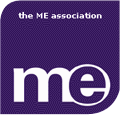 ME Association press statement about the results of the PACE study (18 februari 2011)
ME Association press statement about the results of the PACE study (18 februari 2011) ME/CVS XMRV Expert Dr Paul Cheney slaat terug tegen GET en waarschuwt voor de gevaren van GET voor ME/CVS
ME/CVS XMRV Expert Dr Paul Cheney slaat terug tegen GET en waarschuwt voor de gevaren van GET voor ME/CVS  ALERT: FRAUDULENT ‘CFS/ME’ STUDY – DIRE INTERNATIONAL CONSEQUENCES.
Collective International Professional Response to PACE Required? Feel free to REPOST this to proffesionals and campainers. (Anglia ME Action, UK, 19 februari 2011)
ALERT: FRAUDULENT ‘CFS/ME’ STUDY – DIRE INTERNATIONAL CONSEQUENCES.
Collective International Professional Response to PACE Required? Feel free to REPOST this to proffesionals and campainers. (Anglia ME Action, UK, 19 februari 2011)Over conflicts of interest
-
 A Hitch in its Step: PACE Trial Indicates CBT/GET No Cure For CFS, 60% of Patients Show No Significant Effects (Cort Johnson, Phoenix Rising ME/CFS Forums, 20 februari 2011)
A Hitch in its Step: PACE Trial Indicates CBT/GET No Cure For CFS, 60% of Patients Show No Significant Effects (Cort Johnson, Phoenix Rising ME/CFS Forums, 20 februari 2011)  Falling Off the PACE (CFIDS Association of America, 19 februari 2011)
Falling Off the PACE (CFIDS Association of America, 19 februari 2011) - Too Big to fail. Commentary on the PACE Trial by Kimberly McCleary, President and CEO (CFIDS Association of America)
 Initial Statement on the PACE Trials (Invest in ME, februari 2011)
Initial Statement on the PACE Trials (Invest in ME, februari 2011)  PACE: Surprising and disappointing (Action for ME, 18 februari 2011)
PACE: Surprising and disappointing (Action for ME, 18 februari 2011) PACE Trial blijkt drama (ME/CVS-Vereniging, 21 februari 2011)
PACE Trial blijkt drama (ME/CVS-Vereniging, 21 februari 2011) 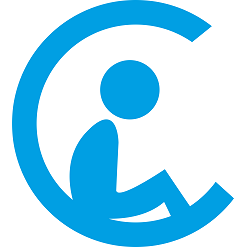 Brits onderzoek naar CGT/GET kost vijf miljoen euro (Willem Bulter, ME/CVS-Stichting, 21 februari 2011)
Brits onderzoek naar CGT/GET kost vijf miljoen euro (Willem Bulter, ME/CVS-Stichting, 21 februari 2011)  500 days (over de PACE publicatie) (Dr. Jamie Deckoff-Jones, XMRV Blogspot)
500 days (over de PACE publicatie) (Dr. Jamie Deckoff-Jones, XMRV Blogspot)  Threat to Professor Hooper (This letter has some interesting information on the diagnostic criteria used in PACE which may not be generally known)
Threat to Professor Hooper (This letter has some interesting information on the diagnostic criteria used in PACE which may not be generally known) Studie PACE trials (CGT/GET): hoe leid je met pr de media en politici af van de feiten? (Frank Twisk, Het alternatief voor ME)
Studie PACE trials (CGT/GET): hoe leid je met pr de media en politici af van de feiten? (Frank Twisk, Het alternatief voor ME)- Uitgebreide analyse van de succescijfers in The Lancet (Frank Twisk, Het Alternatief voor ME)
- Reactie Poppetje aan NRC
 Reactie Esther Priems
Reactie Esther Priems  Reactie Annemoontje aan NRC
Reactie Annemoontje aan NRC

 Reactie ME/CVS Stichting en Steungroep (24 februari 2011)
Reactie ME/CVS Stichting en Steungroep (24 februari 2011)  Hey, Lazy Arses! (Hillary Johnson, Osler’s Web, 21 februari 2011)
Hey, Lazy Arses! (Hillary Johnson, Osler’s Web, 21 februari 2011) 
 Behandeling van ME/CVS – Kloof tussen wetenschap en ervaring patiënt (25 februari 2011)
Behandeling van ME/CVS – Kloof tussen wetenschap en ervaring patiënt (25 februari 2011)
 IACFS/ME Statement on the PACE Trial: The Issue of Illness “Reversal” (IACFS/ME, 24 februari 2011)
IACFS/ME Statement on the PACE Trial: The Issue of Illness “Reversal” (IACFS/ME, 24 februari 2011)
- Kritiek Bettine Molenberg op berichtgeving NRC over ME/CVS (26-27 februari 2011)
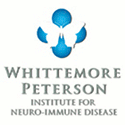 UK Pace Trials: When misguided doctors can do more harm than good (Whittemore Peterson Institute, 3 maart 2011)
UK Pace Trials: When misguided doctors can do more harm than good (Whittemore Peterson Institute, 3 maart 2011)
 RME – CBT and Exercise No Cure for ME / CFS Sufferers
RME – CBT and Exercise No Cure for ME / CFS Sufferers
(RME, Sweden)
Letters to the Lancet
Brieven naar het tijdschrift ‘The Lancet’ over de PACE Trial mogen niet langer dan 250 woorden zijn en mogen maar 5 referenties bevatten. De deadline is 4 maart 2011. Brieven zouden normaliter in The Lancet als ‘comments on the Pace Trial’ gepubliceerd worden.
 Letter to the editors of The Lancet (K. Kimberly McCleary, President & CEO van The CFIDS Association of America, March 4, 2011)
Letter to the editors of The Lancet (K. Kimberly McCleary, President & CEO van The CFIDS Association of America, March 4, 2011)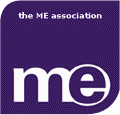 PACE trial: ME Association letter to ‘The Lancet’, 3 March 2011 (Dr. Charles Shepherd, Medical Adviser, The ME Association)
PACE trial: ME Association letter to ‘The Lancet’, 3 March 2011 (Dr. Charles Shepherd, Medical Adviser, The ME Association)
 Response to PACE Trials (Invest in ME Statement)
Response to PACE Trials (Invest in ME Statement)
 Cognitive behaviour therapy/graded exercise therapy is not an effective treatment for Myalgic Encephalomyelitis/Chronic Fatigue Syndrome. (Frank Twisk, Michael Maes en Cort Johnson)
Cognitive behaviour therapy/graded exercise therapy is not an effective treatment for Myalgic Encephalomyelitis/Chronic Fatigue Syndrome. (Frank Twisk, Michael Maes en Cort Johnson)
De brief is afgewezen voor publicatie.
De hoofdredacteur noemt in een toelichting vijf redenen waarom brieven geweigerd worden: de brief is te laat, verwijst naar nieuw onderzoek, bevat “case reports”, is te lang (250 woorden) of bevat meer dan 5 referenties, of is een herhaling van wat reeds gesteld werd.
Zo niet, laat de redactie weten, is de brief geweigerd, omdat de redactie te veel kwalititatief-hoogwaardige reacties ontvangen heeft…
Aangezien de brief niet om één van de bovengenoemde redenen geweigerd kan zijn, is de conclusie dat er veel “kwalititatief-hoogwaardige” reacties binnengekomen zijn.
Als publicatie van die reacties van anderen in de toekomst uitblijft, dan weet U hoe laat het is wat betreft het wetenschappelijke karakter van de Lancet.
Als reactie op
- Troubles of Chronic Fatigue Syndrome Start With Defining It (David Tuller, The New York Times, 4 maart 2011)
schrijven de auteurs van de PACE Trial volgend antwoord:
Studying a Fatigue Illness (The New York Times, 14 maart 2011)
waarop vervolgens David Tuller hen opnieuw van antwoord dient.
Publicatie
![]() The Lancet, Early Online Publication, 18 February 2011
The Lancet, Early Online Publication, 18 February 2011
doi:10.1016/S0140-6736(11)60096-2 [FULL PDF]
Comparison of adaptive pacing therapy, cognitive behaviour therapy, graded exercise therapy, and specialist medical care for chronic fatigue syndrome (PACE): a randomised trial
P D White, K A Goldsmith, A L Johnson, L Potts, R Walwyn, J C DeCesare, H L Baber, M Burgess, L V Clark, D L Cox, J Bavinton, B J Angus, G Murphy, M Murphy, H O’Dowd, D Wilks, P McCrone, T Chalder*, M Sharpe*, on behalf of the PACE trial management group†
Commentaar
The Lancet, Early Online Publication, 18 February 2011
doi:10.1016/S0140-6736(11)60172-4
Chronic fatigue syndrome: where to PACE from here?
G Bleijenberg & H Knoop
Met dank aan allen die deze artikels verzamelden, Poppetje, Zonaanbidster, Esther, American, marlène, senna,…

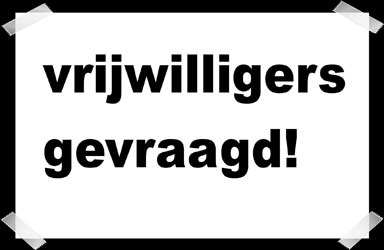




6 reacties
Eerste resultaten nieuwe patientenenquete Action for ME
Nog een aanvulling op bovenstaande(?). Er komen nieuwe onderzoeksresultaten aan van de Engelse patiëntenorganisatie Action for ME. Professor Derek Pheby, M.E. Observatory, werkt mee aan het analyseren van de data. De eerste resultaten zijn bekend. Kernboodschap: rampzalige impact graduele oefentherapie op ME patienten.
The article will report that: “60.2% of those citing GET as their most recent form of physical therapy reported that it had made their condition worse. Of these, 44.1% said it had made them much worse or very much worse, compared with only 22.2% who reported any degree of improvement.
“For exercise on prescription, the results were similar: 52.2% reported that the therapy had made them worse, and only 26.1% reported an improvement.
“Only GAT emerged as doing more good than harm, with 26.3% reporting that they were worse following therapy, while 39.4% reported an improvement. This is statistically highly significant (p =0.002).”
Bron: http://www.afme.org.uk/news.asp?newsid=1045
American
volledige studie/artikel lancet
Ik kan helaas zelf niet bij het volledige artikel (alleen de samenvatting), is er iemand die mij het kan sturen? Ik wil heel graag een reactie sturen naar de diverse media, en wil zelf het volledige artikel graag eerst lezen.
Volledig artikel
zie [FULL PDF]
artikel
Ik had hem inmiddels gezien, dank !!!
Ik heb inmiddels ook de commentaar van Bleijenberg gezien. Ik ben zo boos en verdrietig over alleen de foto bij het artikel. Een patiënt op de bank bij de psychiater die aantekeningen maakt. Hoe erg kan het worden !
Een relevante brief van Hooper met o.a. vernietigende kritiek op Pace Trial..
Bron: Website Cort Johnson
Threat to Professor Hooper
Zie o.a zijn opmerkingen over de London criteria die door Peter White zijn opgerekt.
This is being sent on behalf of Professor Malcolm Hooper.
This letter has some interesting information on the diagnostic criteria used in PACE which may not be generally known.
………………
Because of the serious nature of the criticisms I received in a recent communication, I thought it necessary to place my response in the public domain.
Dear Mr Jameson
As you raise some important issues in your communication of 20th February 2011 about my initial response to the PACE Trial, I will reply in detail.
I am aware that you are an engineer and I am aware of your own position and of your hypothesis about what you refer to as “CFS”, for example, I note that you believe CFS to be (quote) “a functional illness …which can be reversed by psycho-social rehabilitation treatments”. I also note that you equate “CFS” with “persistent burnout”, and that you believe (i) “the viral theories do not adequately explain why personality and mental attitude have been shown to be important in determining which patients contract CFS and which recover the most quickly”, (ii) “Psychosocial treatments do result in recovery from CFS”, (iii) “the patient’s motivation and belief in treatment are likely to be important in recovery”, (iv) “many CFS patients have a lack of confidence and motivation”, (v) “it is likely that…CFS is simply a more severe form of burnout”, (vi) “The most effective treatments appear to be rehabilitation programmes…which encourage the patient to re-integrate back into normal life”, and that you postulate that “CFS…is essentially the same as ‘burnout’…which persists long after the triggering HPA stressor have been removed due to factors such as negative mental attitude and loss of motivation” (http://www.mind-body-health.net/pers…ut_theory.html).
I will now address what you describe as my “serious errors”.
1. You state that the PACE trial compared subsets using the CDC criteria. The criteria that are universally known as the “CDC criteria” are the 1994 Fukuda et al criteria. Indeed, the PACE Trial Identifier listed the 1994 CDC Fukuda criteria as the means of identifying the disorder and the Fukuda criteria are mentioned on page 81 of the 226 page Full Protocol (not to be confused with the shorted form of the Protocol that was published in BMC Neurology 2007:Mar 8:7:6: http://www.biomedcentral.com/1471-2377/7/6) and originally it was these international CDC criteria that were to be used by the Principal Investigators. However, on 22nd October 2004 the Chief Principal Investigator, Professor Peter White, wrote to the West Midlands Multicentre Research Ethics Committee (MREC) seeking substantial amendments to the Protocol and at section 2.1 of his application he substituted the Reeves et al 2003 for the 1994 Fukuda criteria, hence the criteria that are universally known as the “CDC international criteria” (ie. the 1994 Fukuda criteria) were NOT used to compare subsets in the PACE Trial. The criteria that were used (misleadingly described in the Lancet paper as “international criteria for chronic fatigue syndrome”) were the Reeves et al 2003 criteria.
2. You state that the trial compared subsets using “the London criteria for ME (requiring postexertional malaise…”). The original intention of the PIs was to use the Ramsay definition of ME, and you will see from page 417 of “Magical Medicine” these were date-stamped by the MREC as received on 21st March 2003 (http://www.meactionuk.org.uk/magical-medicine.htm). Once again, however, Professor White amended the Protocol and he substituted what appears to be his own version of the “London Criteria” for the Ramsay definition. You will see from page 417 of Magical Medicine that the Ramsay definition required the following: fluctuation of symptoms from day to day or within the day; headaches; giddiness; muscle pain; muscle cramps; muscle twitchings; muscle tenderness; muscle weakness; pins and needles; frequency of passing water; blurred vision; double vision; increased sensitivity of hearing; increased sensitivity to noise; feeling generally awful, and muscle weakness after exercise.
In contrast, Professor White’s version of the “London Criteria” specifically states on page 188 of the Full Protocol that neurological disturbances “are not necessary to make the diagnosis” and they further state that “the usual precipitation by ‘physical or mental exercise’ should be recorded but is not necessary to meet criteria”. Notwithstanding this clear statement in the Full Protocol that postexertional malaise is not necessary to meet the London Criteria, the text of the Lancet article states that participants were also assessed by “the London criteria for myalgic encephalomyelitis (version 2) requiring postexertional fatigue” so there is a significant discrepancy that requires explanation by Professor White, since two such divergent criteria cannot both have been used in the PACE Trial (note that Professor White’s “version 2” is dated 26.11.2004).
According to Professor White’s version of the “London Criteria”, there is no requirement for impairment of short-term memory and loss of concentration, nor is there any requirement for primary depression or anxiety disorder to be present (indeed, if depression or anxiety disorder are present, the Full Protocol states “This means if any depressive or anxiety disorder is present, the London criteria are not met”). This makes the fact that the PIs reported a 47% prevalence of mood and anxiety disorder at baseline particularly notable, because the PIs state that of the 641 participants, 329 (ie. 51.3%) met Professor White’s version of the “London Criteria”; in other words, virtually everyone who did not have anxiety or depression met the “London Criteria” used in the PACE Trial, but Professor White’s “London Criteria” in the Full Protocol (to which the PIs were obliged to adhere) do not require precipitation of symptoms by physical or mental exercise. Put another way, of the 53% who did NOT have anxiety or depression at baseline, 96.8% met Professor White’s “London Criteria”, but those criteria do not require the cardinal feature of ME to be present. This begs the question as to what disorder was being studied under the title of ME/CFS, because the clear distinction between Ramsay-defined ME and somatisation disorder has been significantly lessened by the PIs.
Whilst the Ramsay definition does exist (Postgrad Med J 1990:66:526-530), I would remind you that the “London Criteria” do not in fact exist and that the reference cited in the Lancet is to the 2004 Westcare Report, which simply said that they were “proposed” criteria. The “London Criteria” have no known authors; they have never been published; there is no methods paper which specifically describes them as a “case definition”; they have never been approved nor have they even been finally defined (there are various versions); they have never been validated and they are not on PubMed thus are not available for scrutiny so they cannot be accessed for comparison. This means that Professor White was essentially able to create his own version of the “London Criteria” as evidenced on page 188 of the Full Protocol. Your assertion that the London Criteria required postexertional malaise is thus incorrect despite the PIs having said in their Lancet paper that it was required, and this is an issue for Professor White to address ie. he needs to clarify whether or not he adhered to his own Protocol.
3. You state “there is nothing in the Oxford criteria that ‘excludes people with neurological disorders’ ”. You may not be aware that one of the authors of the Oxford criteria, Professor Anthony David, clarified the issue of whether or not the Oxford criteria exclude people with neurological disorders: “British investigators have put forward an alternative, less strict, operational definition which is essentially chronic…fatigue in the absence of neurological signs, (with) psychiatric symptoms…as common associated features” (AS David; BMB 1991:47:4:966-988). The Oxford criteria (JRSM 1991:84:118-121) suggest that people with a neuromuscular disorder should be used as a comparison group, which rules out the inclusion of people with ME, a WHO classified neurological disorder since 1969.
The fact that the Wessely School do not believe or accept the WHO classification does not mean that ME is a somatisation disorder as they continue to assert despite the irrefutable biomedical evidence to the contrary. If their psycho-social model of ME/CFS were correct ie. if the symptoms are caused by deconditioning consequent to fear of activity, it would be expected that a programme of CBT/GET would be curative, yet the results of both the FINE and PACE Trials do not support the PIs’ model. I note that you fail to reference Professor Wessely’s statement that the PACE Trial interventions are “not remotely curative” made in his JAMA editorial of September 2001. Furthermore, the Oxford criteria specifically state “There are no clinical signs characteristic of the condition”, a criterion which immediately rules out ME/CFS, since there are numerous characteristic, objective, reproducible, abnormal signs that are discernable by any reasonably competent physician. They include the following:
• labile blood pressure (this is a cardinal sign); low systolic BP <100 in 50%
• nystagmus and vestibular disturbance (vestibular dysfunction seen in 90%)
• sluggish visual accommodation
• fasciculation
• hand tremor
• neuromuscular incoordination
• cogwheel movement of the leg on testing
• muscular weakness
• marked facial pallor
• postural orthostatic tachycardia syndrome (POTS)
• positive Romberg
• abnormal tandem or augmented tandem stance
• abnormal gait
• evidence of Raynaud’s syndrome and vasculitis (vascular signs cross dermatomes)
• mouth ulcers
• hair loss
• singular reduction in lung function (shortened breath-holding capacity seen in 60% of patients tested)
• enlarged liver (not usually looked for by psychiatrists).
4. You state that the PACE Trial did use an objective outcome measure (“6 min walking ability in metres”). As the only objective measure of outcome, this is completely inadequate as a measure of physical capacity. A single test is unlikely to reveal any abnormality and serial testing is essential because it is the second test that provides objective evidence of abnormalities in ME/CFS patients and of their inability to work. The reference provided by the PIs for the six minute walking test is Buckland RJA et al (BMJ 1982:284:1607-1608) but the paper itself cites McGavin CR et al (BMJ 1976:i:822-823), which draws attention to the difficulty of achieving reproducible results with such a test. Moreover, the Chief Principal Investigator himself, Peter White, has published evidence supporting the need for serial post-exercise testing (Immunological changes after both exercise and activity in Chronic Fatigue Syndrome: a pilot study. White PD, KE Nye, AJ Pinching et al. JCFS 2004:12 (2):51-66 ).
None of the interventions in the PACE Trial enabled participants to achieve anything like a normal walking speed for the full six minutes when compared with a healthy individual. It is regrettable that Professor White decided to abandon the use of an actometer, which would have provided unequivocal objective evidence of improvement or non-improvement. The only reported improvement on the six minute level walking test for those allocated to CBT was an increase of 21 steps, whilst for those allocated to APT (note that APT is not the same as pacing, as APT is a vehicle for incremental aerobic exercise and involves planning, achieving and sustaining targets) there was an increase of 20 steps, these improvements having cost the nation £5 million.
The NHS Choices website provides the following comment on the success or otherwise of the PACE Trial: “Compared with specialised medical care alone, CBT plus specialised medical care improved fatigue scores by 3.4 points on a 33-point scale, while GET plus specialised medical care improved scores by 3.2 points. Physical function score improvements were 7.1 for CBT and 9.4 for GET on a 100-point scale” (http://www.nhs.uk/news/2011/02Februa…prove-CFS.aspx).
The two favoured interventions (CBT and GET) had side-effects rates of 89% and 93% respectively and according to the PIs, “adverse events were common”.
Rated on their 33-point and 100-point scales, participants improved on average only 10% and 8.25% with the two recommended interventions, which I believe hardly qualifies as even “moderately effective” as the PIs claim.
You accuse me of “doing potential damage to CFS patients by putting them off the only treatments that have been proven to be effective”. I refute your allegation that I appear to be putting out deliberate misinformation, but you are of course free to carry out your threat to complain about me in any forum you choose, including to my University. However, if you exercise this option, be aware that you will need supportive evidence and that your own credibility will come under scrutiny.
Malcolm Hooper
IACFS/ME rekent af met psychiatrisch model achter PACE-TRIAL
De internationale wetenschappelijke organisatie IACFS waarschuwt voor de berichtgeving in de media en rekent af met het achterliggende conceptuele (psychiatrische) model dat bij het onderzoek is gebruikt.
Zie voor de volledige tekst: http://www.iacfsme.org/PACETrial/tabid/450/Default.aspx